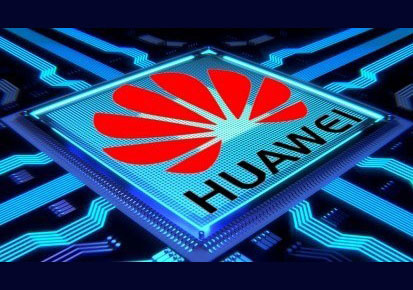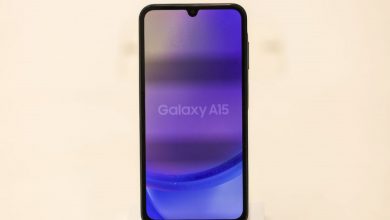Huawei officially launched the world’s most powerful AI processor – the Ascend 910 – as well as an all-scenario AI computing framework, MindSpore. “We have been making steady progress since we announced our AI strategy in October last year,” said Eric Xu, Huawei’s Rotating Chairman. “Everything is moving forward according to plan, from R&D to product launch. We promised a full-stack, all-scenario AI portfolio. And today we delivered, with the release of Ascend 910 and MindSpore. This also marks a new stage in Huawei’s AI strategy.” Ascend 910: More computing power than any other AI processor in the world The Ascend 910 is a new AI processor that belongs to Huawei’s series of Ascend-Max chipsets. Huawei announced the processor’s planned specs at its 2018 flagship event, Huawei Connect. After a year of ongoing development, test results now show that the Ascend 910 processor delivers on its performance goals with much lower power consumption than originally planned. For half-precision floating point (FP16) operations, Ascend 910 delivers 256 TeraFLOPS. For integer precision calculations (INT8), it delivers 512 TeraOPS. Despite its unrivaled performance, Ascend 910’s max power consumption is only 310W, much lower than its planned specs (350W). “Ascend 910 performs much better than we expected,” said Xu. “Without a doubt, it has more computing power than any other AI processor in the world.” Ascend 910 is used for AI model training. In a typical training session based on ResNet-50, the combination of Ascend 910 and MindSpore is about two times faster at training AI models than other mainstream training cards using TensorFlow. Moving forward, Huawei will continue investing in AI processors to deliver more abundant, affordable, and adaptable computing power that meets the needs of a broad range of scenarios (e.g., edge computing, on-vehicle computing for autonomous driving, and training). MindSpore: All-scenario AI computing framework Huawei also launched MindSpore today, an AI computing framework that supports development for AI applications in all scenarios. AI computing frameworks are critical to making AI application development easier, making AI applications more pervasive and accessible, and ensuring privacy protection. In 2018, Huawei announced the three development goals for its AI framework: Easy development: Dramatically reduces training time and costs Efficient execution: Uses the least amount of resources with the highest possible OPS/W Adaptable to all scenarios: Including device, edge, and cloud applications MindSpore marks significant progress towards these goals. As privacy protection grows more important than ever, support for all scenarios is essential for enabling secure, pervasive AI. This is a key component in the MindSpore framework, which can readily adapt to different deployment needs. Resource budget environments can be as large and complicated or small and simple as needed – MindSpore supports them all. MindSpore helps ensure user privacy because it only deals with gradient and model information that has already been processed. It doesn’t process the data itself, so private user data can be effectively protected even in cross-scenario environments. In addition, MindSpore has built-in model protection technology to ensure that models are secure and trustworthy. The MindSpore AI framework is adaptable to all scenarios – across all devices, edge, and cloud environments – and provides on-demand cooperation between them. Its “AI Algorithm As Code” design concept allows developers to develop advanced AI applications with ease and train their models more quickly. In a typical neural network for natural language processing (NLP), MindSpore has 20% fewer lines of core code than leading frameworks on the market, and it helps developers raise their efficiency by at least 50%. Through framework innovation, as well as co-optimization of MindSpore and Ascend processors, Huawei’s solution can help developers more effectively address complex AI computing challenges and the need for a diverse range of computing power for different applications. This results in stronger performance and more efficient execution. In addition to Ascend processors, MindSpore also supports GPUs, CPUs, and other types of processors. When introducing MindSpore, Xu emphasized Huawei’s commitment to helping build a more robust and vibrant AI ecosystem. “MindSpore will go open source in the first quarter of 2020. We want to drive broader AI adoption and help developers do what they do best.” Enabling truly pervasive AI Before announcing the release of Ascend 910 and MindSpore, Xu revisited Huawei’s AI strategy: Invest in AI research: Develop fundamental machine learning capabilities in computer vision, natural language processing, decision and inference, etc. Focus on: o Data and power-efficiency (i.e., use less data, computing, and energy) o Security and trustworthiness o Automation / autonomy Build a full-stack AI portfolio o Adaptive to all scenarios, including both standalone and cooperative scenarios between cloud, edge, and device o Abundant and affordable computing power o Efficient and easy-to-use AI platform with full-pipeline services Cultivate talent and an open ecosystem: Collaborate widely with global academia, industries, and partners Strengthen existing portfolio: Bring an AI mindset and techniques into existing products and solutions to create greater value and enhance competitive strengths Drive operational efficiency: Use AI to automate high-volume, repetitive tasks for better efficiency and quality Huawei’s AI portfolio covers all deployment scenarios, including public cloud, private cloud, edge computing, IoT industry devices, and consumer devices. The portfolio is also full-stack: It includes the Ascend IP and chip series, chip enablement layer CANN, training and inference framework MindSpore, and application enablement platform called ModelArts. Huawei defines AI as a new general purpose technology, like railroads and electricity in the 19th century, and cars, computers, and the Internet in the 20th century. The company believes that AI will be used in almost every sector of the economy. According to Xu, AI is still in its early stages of development, and there are a number of gaps to close before AI can become a true general purpose technology. Huawei’s AI strategy is designed to bridge these gaps and speed up adoption on a global scale. Specifically, Huawei wants to drive change in ten areas: Provide stronger computing power to increase the speed of complex model training from days and months to minutes – even seconds. Provide more affordable and abundant computing power. Right now, computing power is both costly and scarce, which limits AI development. Offer an all-scenario AI portfolio, meeting the different needs of businesses while ensuring that user privacy is well protected. This portfolio will allow AI to be deployed in any scenario, not just public cloud. Invest in basic AI algorithms. Algorithms of the future should be data-efficient, meaning they can deliver the same results with less data. They should also be energy-efficient, producing the same results with less computing power and less energy. Use MindSpore and ModelArts to help automate AI development, reducing reliance on human effort. Continue to improve model algorithms to produce industrial-grade AI that performs well in the real world, not just in tests. Develop a real-time, closed-loop system for model updates, making sure that enterprise AI applications continue to operate in their most optimal state. Maximize the value of AI by driving synergy with other technologies like cloud, IoT, edge computing, blockchain, big data, and databases. With a one-stop development platform of the full-stack AI portfolio, help AI become a basic skill for all application developers and ICT workers. Today only highly-skilled experts can work with AI. Invest more in an open AI ecosystem and build the next generation of AI talent to meet the growing demand for people with AI capabilities. Wide adoption of Ascend 310 and ModelArts At Huawei Connect 2018, Huawei announced its AI strategy and full-stack, all-scenario AI portfolio, including the Ascend 310 AI processor and ModelArts that provides full-pipeline model production services. Ascend 310 is Huawei’s first commercial AI System on a Chip (SoC) in the Ascend-Mini series. With a maximum power consumption of 8W, Ascend 310 delivers 16 TeraOPS in integer precision (INT8) and 8 TeraFLOPS in half precision (FP16), making it the most powerful AI SoC for edge computing. It also comes with a 16-channel FHD video decoder. Since its launch, Ascend 310 has already seen wide adoption in a broad range of products and cloud services. For example, Huawei’s Mobile Data Center (MDC), which employs Ascend 310, has been used by many leading automakers in shuttle buses, new-energy vehicles, and autonomous driving. The Ascend 310-powered Atlas series acceleration card and server are now part of dozens of industry solutions (e.g., smart transportation and smart grid) developed by dozens of partners. Ascend 310 also enables Huawei Cloud services like image analysis, optical character recognition (OCR), and intelligent video analysis. There are more than 50 APIs for these services. At present, the number of API calls per day has exceeded 100 million, and this figure is estimated to hit 300 million by the end of 2019. More than 100 companies are using Ascend 310 to develop their own AI algorithms. Huawei’s ModelArts provides model development services spanning the full pipeline, from data collection and model development to model training and deployment. At present, more than 30,000 developers are using ModelArts to handle 4,000+ training tasks per day (for a total of 32,000 training hours). Among these tasks, 85% are related to visual processing, 10% are for processing audio data, and 5% are related to machine learning. With today’s launch of Ascend 910 and MindSpore, Huawei has unveiled all the key components of its full-stack, all-scenario AI portfolio. “Everything is moving forward according to plan. We promised a full-stack, all-scenario AI portfolio. And today we delivered,” said Xu. This launch is a new milestone in Huawei’s AI roadmap; it’s also a new beginning. At the end of his presentation, Xu added that Huawei will debut more AI products at its upcoming conference, Huawei Connect 2019, which will be held between September 18 and 20 in Shanghai. Huawei is working closely with its partners to make AI more pervasive and accessible, and help bring the benefits of digital technology to every person, home, and organization.
أطلقت شركة هواوي رسميا معالج أسيند 910 (Ascend 910) الذي يعتبر بحسب الخبراء أقوى معالج للذكاء الاصطناعي في العالم، كما أطلقت منظومة عمل كاملة لحوسبة الذكاء الاصطناعي تحت اسم “مايند سبور” (MindSpore). وقال إريك شو رئيس مجلس إدارة شركة هواوي: “لقد حققنا تقدما مطردا منذ أن أعلنا عن إستراتيجية الذكاء الاصطناعي في أكتوبر من العام الماضي”. وأضاف أن “كل شيء يتحرك للأمام وفقا للخطة، من البحث والتطوير إلى إطلاق المنتج. لقد وعدنا بمجموعة كاملة من منتجات الذكاء الاصطناعي، واليوم قدمنا -مع إصدار أسيند 910 ومايند سبور- مرحلة جديدة في إستراتيجية هواوي في مجال الذكاء الاصطناعي”. ** معالج خارق وحققت هواوي بمعالج أسيند 910 تقدما مهما في مجال معالجات الذكاء الاصطناعي، حيث طورت أداء المعالج باستهلاك طاقة أقل من المخطط لها. حيث يستهلك للقيام بعمليات معقدة طاقة قصوى تبلغ 310 واطات فقط، أي أقل بكثير من المواصفات المقررة وهي (350 واطا). وقال شو، وفق الجزيرة نت، إن “أداء أسيند 910 أفضل بكثير مما توقعنا.. دون شك، يتمتع بقدرة حسابية أكبر من أي معالج ذكاء اصطناعي آخر في العالم”. وفي الوقت نفسه، توفر منظومة عمل حوسبة الذكاء الاصطناعي مايند سبور من هواوي بيئة تطوير سهلة وتنفيذا فعالا وقابلا للتكيف مع جميع السيناريوهات. ونظرا لأنها تتعامل فقط مع معلومات التدرج والنموذج التي تمت معالجتها بالفعل، فإن مايند سبور تساعد في ضمان خصوصية المستخدم. علاوة على ذلك، تمتلك مايند سبور سطور برمجة أقل بـ20% من الشفرات الأساسية مقارنة بالمنظومات الرئيسية في السوق، كما أنها تساعد المطورين على رفع كفاءتهم بنسبة 50% على الأقل. وقال شو “سوف تصبح مايند سبور مفتوحة المصدر في الربع الأول من عام 2020. نريد أن نحقق تبنيا أوسع للذكاء الاصطناعي ومساعدة المطورين على القيام بما يقومون به بشكل أفضل”. مجموعة تطوير متكاملة تغطي مجموعة هواوي لتطوير الذكاء الاصطناعي جميع السيناريوهات والأدوات، وتشمل: سلسلة معالجات أسيند، وطبقة برمجة الرقاقة “كانن” (CANN)، ومنظومة البرمجة والتدريب مايند سبور، ومنصة تمكين التطبيق التي تسمى موديل أليرت. وتؤمن هواوي بأنه سيتم استخدام الذكاء الاصطناعي في كل قطاع من قطاعات الاقتصاد تقريبا، ولكن هناك عددا من الفجوات التي يجب سدها قبل أن يصبح الذكاء الاصطناعي تقنية حقيقية للأغراض العامة. ويرى مراقبون أنه مع إطلاق أسيند 910 ومايند سبور، فإن هواوي في طريقها لتحقيق أهدافها في مجال الذكاء الاصطناعي.




